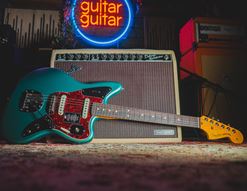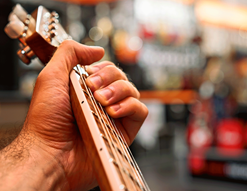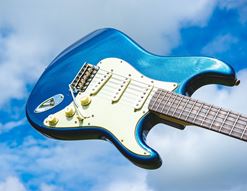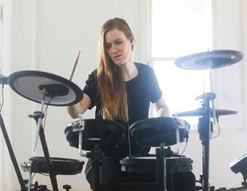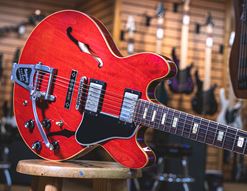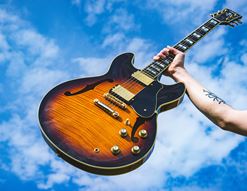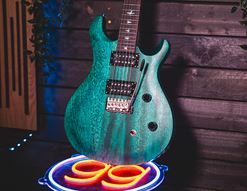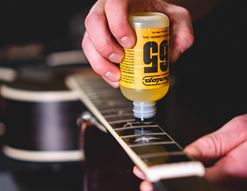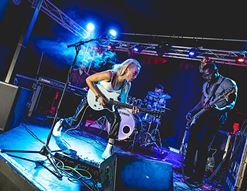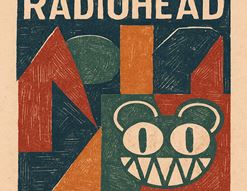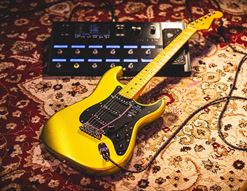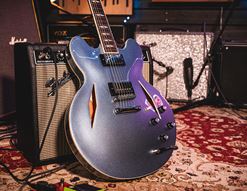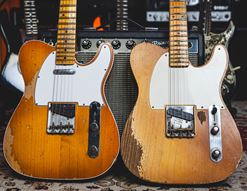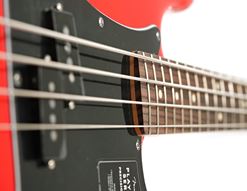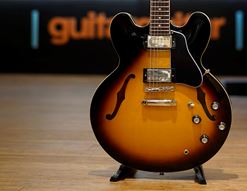Reverb is one effect that 99.9% of guitarists use at least some of the time. Whether it’s directly from their amplifier, from a reverb pedal or from a digital plugin on their laptop, everybody uses reverb at one time or another.
But it’s also the effect that many guitarists don’t really think about too much. They have their own preferred ‘reverb setting’ and that’s how it stays, oftentimes. Fair enough, but it’s an incredibly expressive effect, and very powerful when used in certain ways. Also, there are a great many variations on the theme available: not all reverbs are alike. Some are simple spring units that literally use a physical metal spring to make the sound, whilst others use vast ‘convolution algorithms’ to describe all sorts of perceived sonic ambiances.
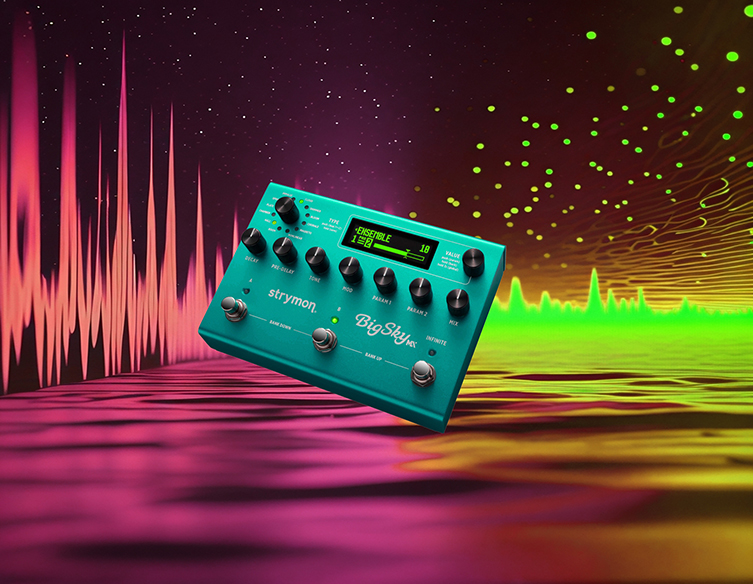
Today, I want to pay attention to reverb pedals for guitarists. I want to dive in, yes, but I also want to categorise some of them for those who are new to the subject. I’ll highlight what makes them similar, what sets them apart, and perhaps which ones might be better for you.
I’ll hopefully help you identify how you can enhance your own enjoyment and playing experience with either a dash of reverb, or an entire canyon’s worth!
Are you ready? Let’s go(ooooooooooo…….)
Contents
Beginner/Occasional Reverb User
What is Reverb?
In basic terms, reverb is a simulation of an ambient space. When you sing in the shower and it sounds cool and echo-ey? Reverb. When you raise your voice in a high-ceilinged room and everyone can suddenly hear you? Reverb. When choirs sound amazing in churches, with no mics or external equipment? Reverb.
It’s sound waves travelling through the atmosphere, bouncing off a surface (wall, tile, whatever) and heading back towards your ear, slightly altered from its journey. The sound of that experience is what we call reverberation, or reverb for short.
Different locations and premises have different types of reverb sounds, and that’s why you’ll see modes on a reverb pedal called things like ‘room’, ‘hall’ and ‘cave’. Each of these is a different reverb algorithm, designed to simulate the effect of sound passing through (and back from) that particular room or hall. It can get pretty convoluted, to be honest, so here’s a short breakdown of some of the main reverb types…
Reverb Types
Most reverb pedals and plugins will allow you a choice of different reverb algorithms. Here are some of the main reverbs you’ll encounter in your sonic travels, but there will always be new sounds, because there are always new pedals being made!
- Spring - spring reverb mimics an actual physical spring being ‘sprung’ by sound. Lots of traditional tube amplifiers have spring reverbs on board, with actual springs that resonate to the sound vibrations of your guitar tone. These tend to be bright and vivid sounding, but not too long in length.
- Room - the sound of a loud signal (your guitar tone, say) being played in a reasonably large room. Acoustic spaces like this make ‘real’ reverb happen, so room reverb recreates that natural phenomenon.
- Hall - same as above but longer, really, as it is describing a physically bigger space.
- Cave/Cavern - longer again, and often gets combined with a subtle upper octave effect that may have a name like ‘shimmer’.
- Tile - ceramic tiles on walls and ceilings bounce soundwaves back with a particular addition to the tone, normally a more trebly sound. This is the ‘singing in the bathroom’ sound.
- Plate - back in the day, big commercial studios would have a large physical metal reverb plate that would react to whichever frequencies were sent towards it. Plate reverbs are versatile, and are the type to go for if you want that famous Phil Spector ‘wall of sound’ effect.
These are general descriptions. Most (all, really) reverbs can be adjusted far beyond their initial descriptive terms. It’s handy to know what each term means, but it’s far better to try a number of reverbs and simply go with whatever sounds best to you, regardless of what it’s called.
Choosing a Reverb Pedal
When deciding on a reverb pedal, I think the main considerations will lie in your personal style as a guitarist. If you are a post-rock pedal maniac who desires to create ‘cathedrals of sound’, then you’ll be the type to dive into a complex reverb unit (or a couple) with loads of parameters. If you are a blues and rock player who likes their sound mostly ‘straight up’ with an occasional dash of space, then one good reverb sound is really all you need.
Most reverb pedals will give you most of what you want, but there are so many available that you may as well dial things in a little. Let me guide you through the path ahead with a few recommendations…
Beginner/Occasional Reverb User
If you want the odd splash of reverb on your sound now and then, I have three great choices for you. Both are easy to use and easy to incorporate into your overall sound.
JHS 3 Series Reverb
I love this pedal. The JHS Pedals 3 Series Reverb is a good price, considering it’s made in the USA, and it is about as simple as it gets. That said, JHS are one of the greatest pedal builders in America, so the sounds available are top notch, regardless of the relatively humble spend. Best of all, the single reverb sound is actually able to go from a ‘small room’ sound to a pretty huge tail (length), with lots of character in the sound itself.
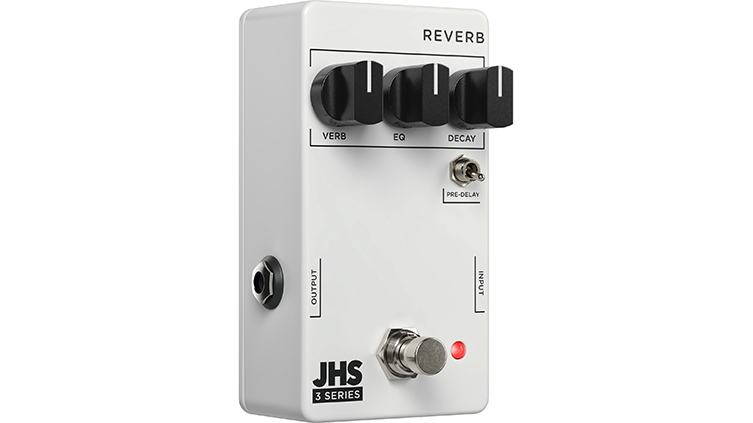
Walrus Audio Fundamental Reverb
This is Walrus’ entry point reverb and I like it for essentially the same reasons as the JHS one. It’s a great price, it’s a pro piece of gear and it’s easy to use. Basically, neither of these is the better pedal. Try them both and go with your instincts! Or whichever isn’t sold out, as they are both massively popular. Extra points for the slider controls!
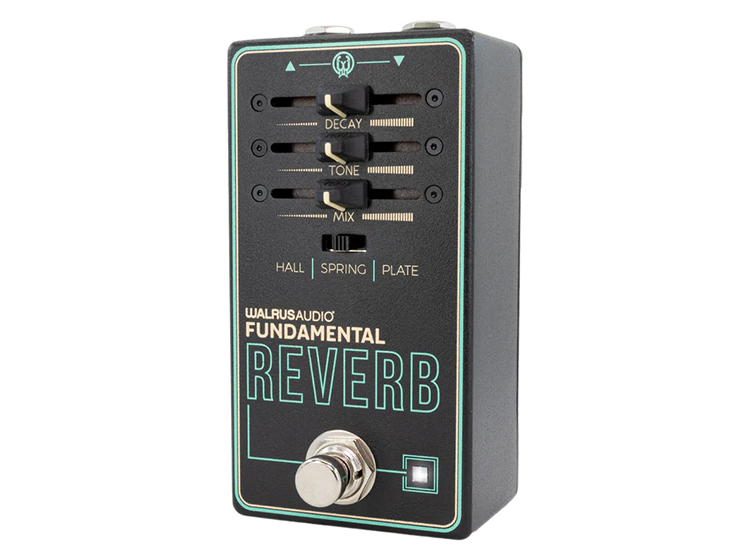
Landlord FX Banging Hangover Reverb
If cost is an issue then the ultra-value-packed Landlord FX range is worth dipping into. Cheap pedals are potentially as fun and inspiring as expensive ones if you manage your expectations, and whilst the reverb onboard the Banging Hangover isn’t the most subtle, maybe you don’t want subtle! It won’t give you Strymon levels of quality, but you may find something else in it that’s more valuable to you. Try it with a fuzz and stand back!
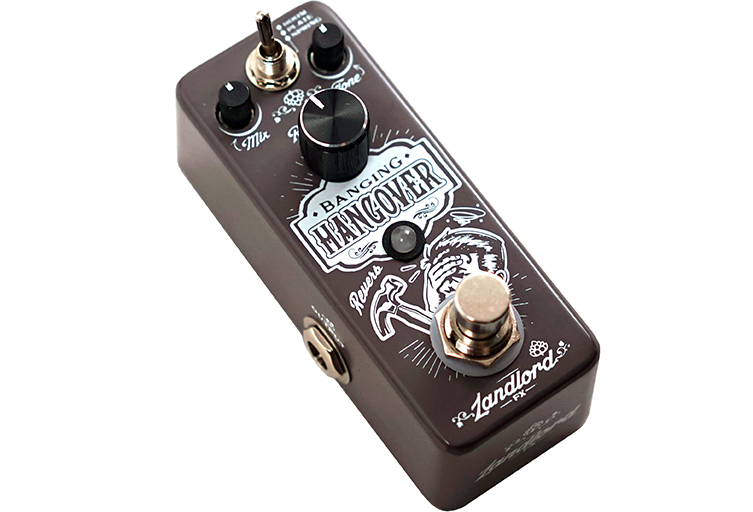
All-Rounder Reverbs
This smattering of reverbs are more feature-rich than the previous batch. Again, they are not ‘better’ (‘better’ is really not a useful term when we are speaking subjectively) but you’ll get more options and more control with these units. There’s a couple of all-time classics here, too!
BOSS RV-6 Reverb
The iconic BOSS pedal chassis is on more pedalboards than patch cables, and rightly so. They know what they are doing and they know how to give it to the people. The RV-6 is a bit of a powerhouse actually, with 7 reverbs onboard plus a delay for good effect. What I love is how effective each control knob is: I also feel like I’m making interesting progress as I dial in tones, and that isn’t something that all pedals have!
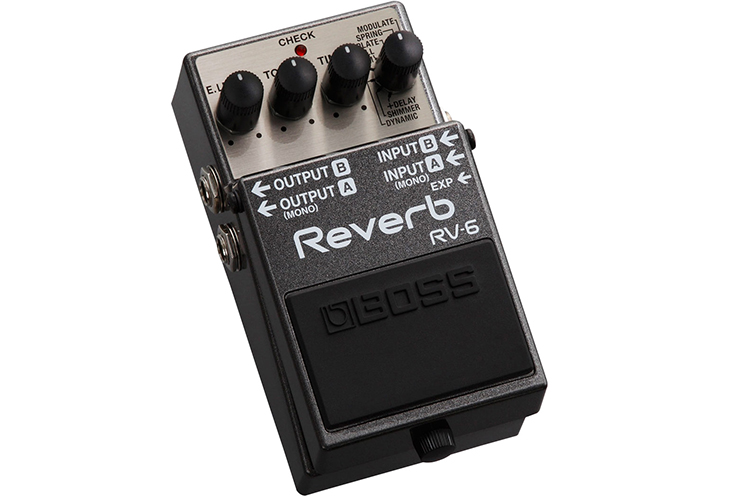
Electro-Harmonix Holy Grail Max
EHX are good for a few reverbs (the Oceans 11 is rather lovely too) but how can I miss out on the Holy Grail? This is the Max version, so there are longer tails and a more detailed version of that famous sound on offer. Gone is the ‘room’ mode in favour of a plate reverb (better variety) and the ‘flerb’ (flanger and reverb) has been swapped for a reverse reverb. Better? Not sure. Still, there are 4 modes on this model, and I reckon you’ll love them all. It’s a new timeless classic!
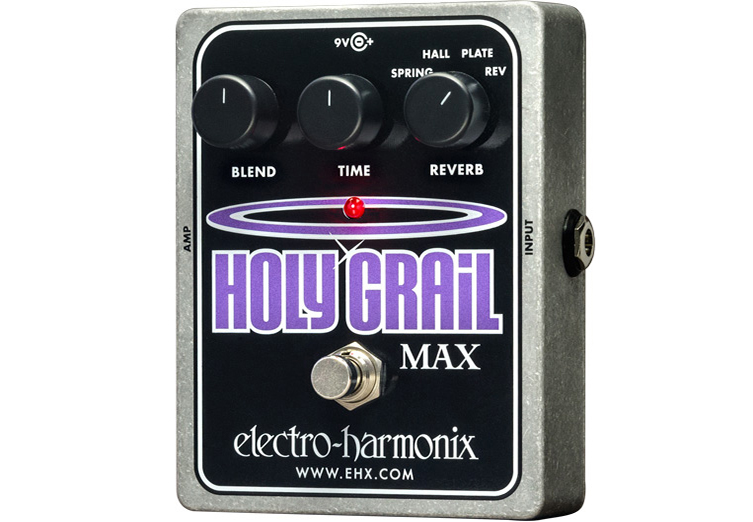
Advanced/Top End Reverbs
This is the area in which the most complex reverb pedals live. The most types, the best control and the tightest sonic details abound here for those seeking only the finest. There’s a lot of variety - and a fair bit of crossover - between these units, but they all do perform in their own special ways. I’ve found that I prefer some over others in terms of operation. Which ones? That’s hardly important, because it’s all about what works for YOU!
Still, here’s some incredible, massively powerful reverb pedals to check out…
Strymon Big Sky MX
Strymon reverb pedals (there are a number of them) are actually a whole subject unto themselves. This is not the time and place for it though, so please let me pick my favourite: the Strymon Big Sky MX. For me, there’s no stone left unturned with this powerful box. Be as subtle or as gargantuan as you like with your sound choices, safe in the knowledge that the hefty processing in the Big Sky MX will hardly break a sweat when delivering the goods.
This is world-class reverbing, with stupendous levels of control, comprehensive ins and outs and built-in impulse responses that mimic the atmospheric reactions of old vintage gear. If all of this is giving you a sore head, buy an RV-6, but if that last sentence had you drooling then this is the only pedal that will satisfy you.
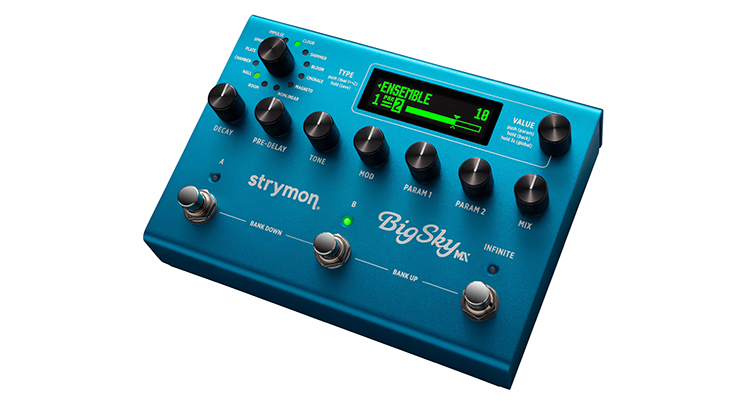
Eventide Space
Well, maybe that pedal or this one, the Space and Beyond from Eventide. I can honestly say that the first time I tried this pedal, I was absolutely gobsmacked. The algorithms are so creative and inspiring, with the Black Hole preset alone being more than worth the price of admission. If you like getting the lab coat on and becoming REALLY specific with settings, then this pedal will offer mysteries, surprises and vast rewards.
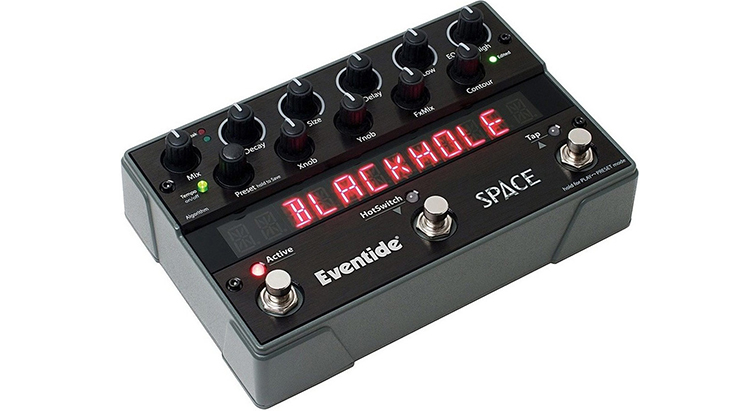
Special Effects Reverb Units
Reverb is a vast and complex thing, and sometimes some special effects are required. This group has some notable madness built in, though I should point out that the previous two pedals I showed are both capable of some very intense strangeness too!
Catalinbread CBX Gated Reverb
Gated reverb in a pedal? Yup! Relive all of your most intense 1980s Phil Collins moments with a sound that is both thrilling and marmite in equal measures. The gated reverb effect of the Catalinbread CBX does as it says: it ‘closes a gate’ on the sound, chopping it off instead of letting it trail away. With some careful adjustment, you can do some very cool rhythmic things with this, as well as sounding like you are constantly playing the Miami Vice soundtrack.
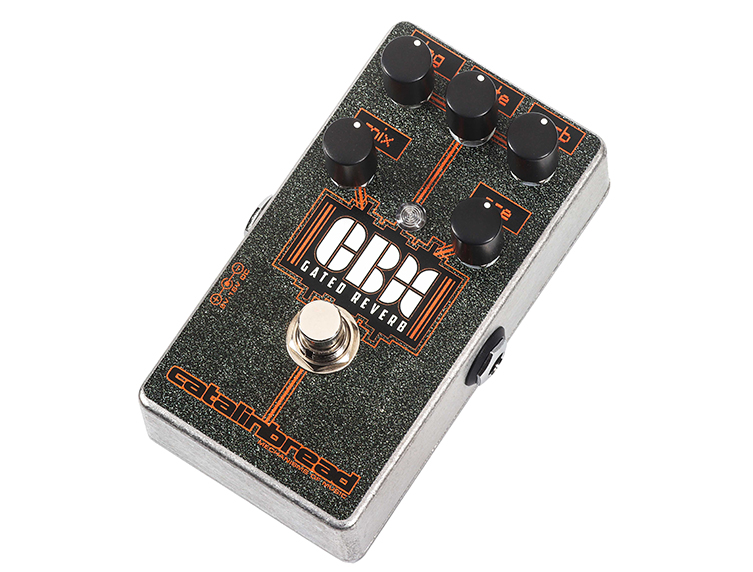
BOSS RE-202 Space Echo
Roland’s original vintage 70s Space Echo unit has long since held a special place in the hearts of noise manglers. This is due partly to its special ability to self-oscillate and sonically ‘turn in on itself’, as it were. BOSS have reissued a number of pedals over the years that have quite successfully mimicked this strangely brilliant behaviour. The BOSS RE-202 Space Echo is the latest, and it’s heaps of psychedelic fun.
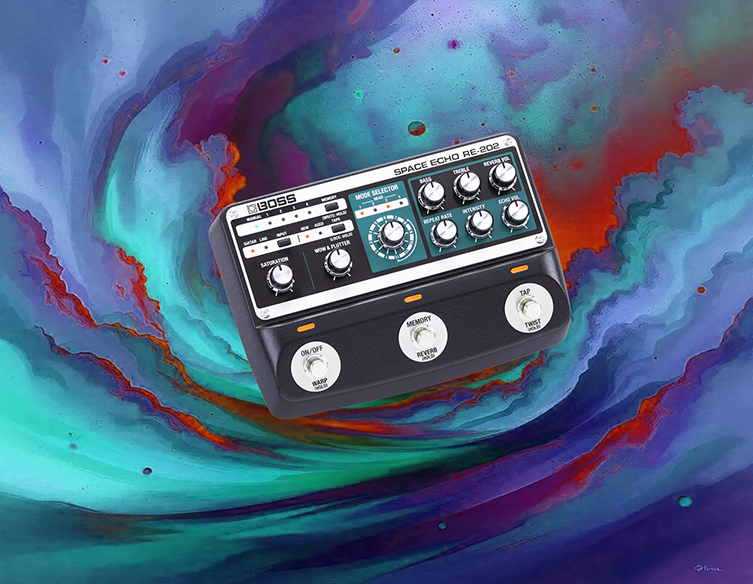
A mix of both reverb and delay effects, the Space Echo also adds a little bit of its own tone into the mix, too. It’s definitely an effect full of character and expression, so if you are looking towards the further reaches of outer space, then this rocket-fulled ambience machine may be all the spaceship you need.
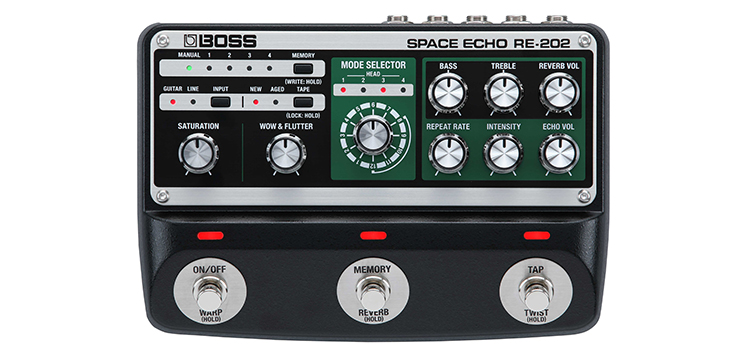
Walrus SLOER
This final choice is, in my opinion, both the best top-end reverb and the most creative one. I could only put the Walrus Audio SLOER into one category in today’s blog though, so I’ve saved the best for last!
So, why do I like this one so much? Well, I already loved the Walrus SLO, which was the preceder to this one. It gave lush, interesting and musically creative ambiences that I found inspiring and fun. This one goes further with options to latch the sound (freezing chords etc to play over), additional high and low octave sounds for those truly epic soundscapes and an even greater level of control over the width, depth and behaviour of the effects.
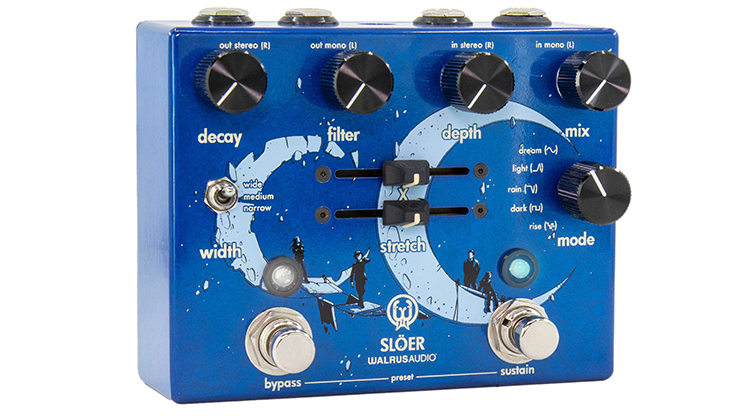
On top of that, there is also a RAIN setting, which I absolutely love. What does it do? Well, why don’t you play it yourself and find out?!
Reverbs That Resonate
Reverb is truly an effect for all musicians. Whether you pepper it into your sound now and then, or build entire tracks around a particular algorithm, reverb is as expressive as you are. I think reverb is almost an instrument in its own right, and can be incorporated into your music in a huge number of rewarding ways. There are a lot of okay, good and great reverb pedals out there. I hope I’ve shown you some good ones today. One thing’s for sure: most of us here at guitarguitar are well into reverb, so fire into your nearest store and pick our brains about it, we’ll be only too happy to share our insights and advice!
Browse our Selection of Reverb Pedals

